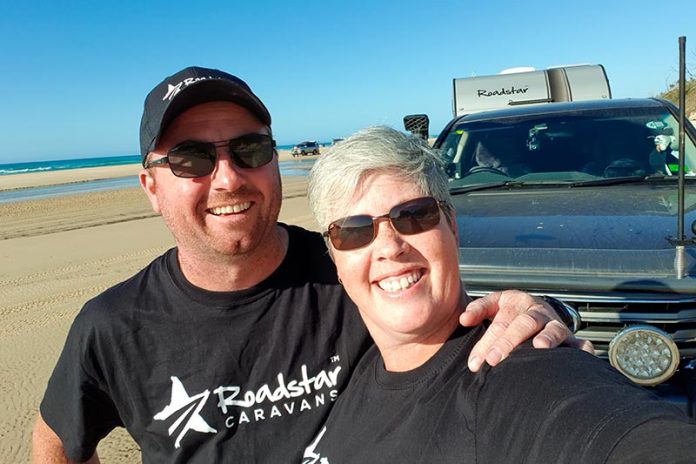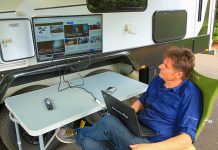Offroad caravanning can be challenging and rewarding, leading you to some of the country’s most spectacular remote areas, but it’s hard on you, your gear and your caravan.
You can see a lot of Australia by sticking to the sealed roads. The problem is that you’ll be sharing them with many other people. That is not necessarily a bad thing. What I am saying is that, if you’re prepared to be a little adventurous by venturing off sealed roads, you will experience so much more than you would otherwise, and a lot of the time, you’ll have those experiences all to yourself. Offroad caravanning is incredibly rewarding.
But offroad caravanning is not easy, and don’t let anyone tell you otherwise. It’s dirty, mentally and physically demanding, and it’s very hard on all your equipment. For many caravanners, their first offroad travelling experience may well be their last. The main reason will boil down to a lack of experience and being completely unprepared for the adventure.
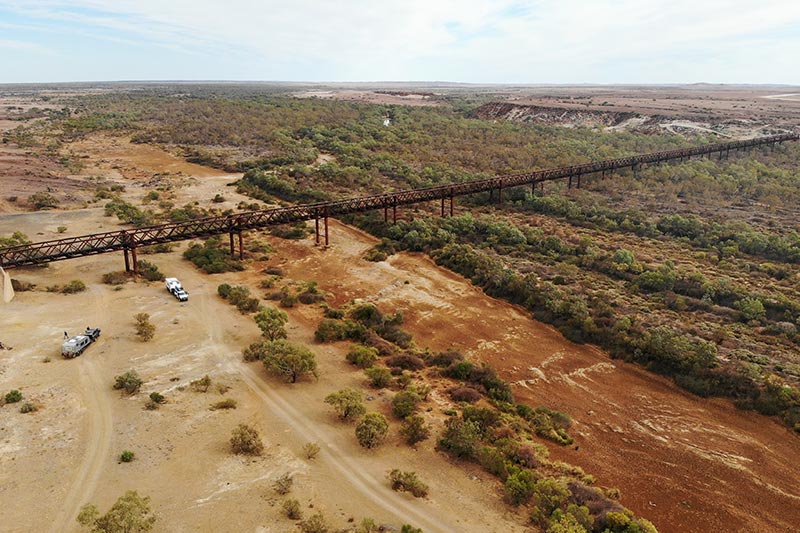
If you’d like to try your hand at offroad caravanning, here are five things you should do before turning down that dirt road…
PLUMBING AND WIRING PROTECTION
I’ve seen a lot of caravans marketed as ‘offroad capable’ and yet they lack some basic protection to the vulnerable parts like the wiring and plumbing running underneath the van. These are easily damaged by the constant bombardment of stones thrown up by the tow vehicle and the caravan’s wheels. This damage can be catastrophic if vital electrical cables are broken, particularly to the caravan’s brakes.
Fortunately, it isn’t a big task to provide some protection to these vital components of your van. Nor is it particularly expensive.
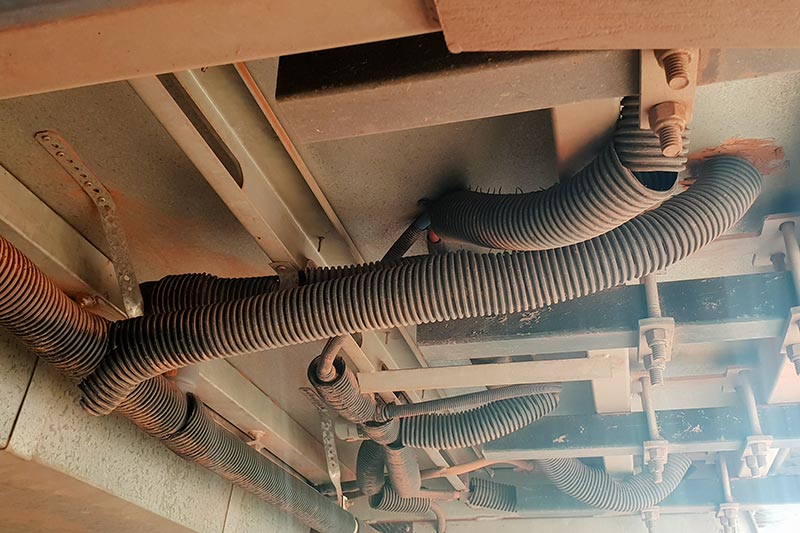
First, get underneath the van and identify the exposed wiring and pipes. Take note of the various sizes and approximate lengths. Then head down to your local auto parts supplier and buy some lengths of split black electrical conduit. This stuff is quite flexible and easy to fit over any exposed wiring and the red and blue water supply lines.
For the thicker drain pipes, get some black agricultural pipe, usually called agi-pipe, from your local hardware supplier. Cut it into lengths to fit the drainage pipes under the van, split the agi-pipe with a sharp knife and slip it over the pipes. This stuff is extremely durable and will survive many kilometres of dirt-road-pounding.
FILL IN THE GAPS
When you’re looking underneath your caravan for exposed wiring and plumbing, also have a look to see where drains and wiring have been routed through the floor inside the van. These holes are supposed to be sealed properly by the manufacturer, but they seldom do a thorough job. This is where dust can enter the caravan and, trust me, this is not something you want to have happen, especially after traversing a couple of hundred kilometres of even mild dirt roads.
Australia’s red outback dust is like talcum powder and, once inside the van, makes its way into every corner and crevasse. It’s a bugger to clean. Sealing up these holes with additional silicone will go a long way to minimising the amount of dust ingress into your caravan.
To find the gaps, wait until nighttime, and while you lie under the van, get another person to go inside with a torch and shine it in every area where you see pipes and wiring going inside the van. Your partner may need to shine the torch inside the lower cupboards, particularly the ones in the kitchen and ensuite. If you can see the light from the torch piercing through any of these holes, you’ll need to plug these gaps with silicone sealant.
PACK SOME TOOLS AND SPARES
There’s a golden rule for offroad travel: nothing rattles tight. Everything rattles loose, and the constant vibrations from rough roads will loosen every single unsecured screw, bolt and nail inside your caravan. You need to be prepared and equipped to make ongoing repairs. For this reason, it’s a good idea to carry a small toolkit and a selection of spare screws, bolts and nails so you can fix things as they break. Windows, doors and cupboards are the most likely to come loose. Electrical fittings such as fridges and microwaves are also particularly vulnerable.
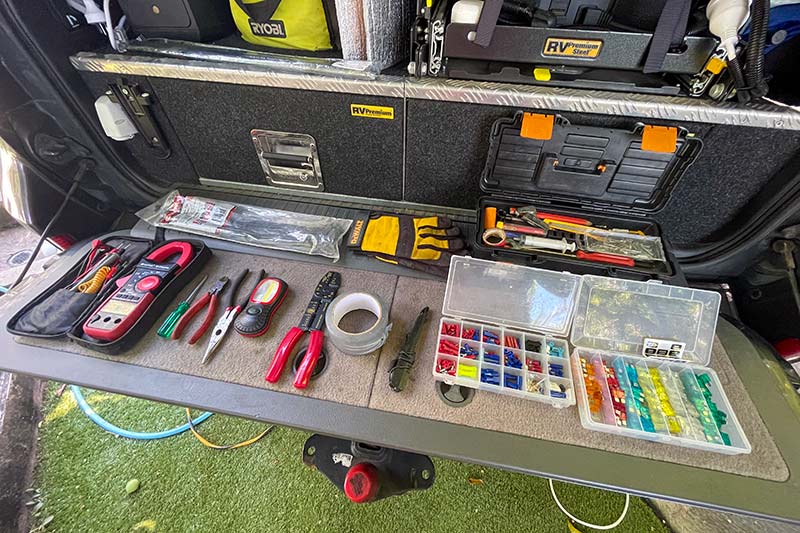
You also need to be prepared to fix minor electrical issues, such as blown fuses and broken wires. Talk to your manufacturer about the types and sizes of fuses used in your caravan and keep some spares with you. Most wiring issues can be fixed with cheap electrical connectors and a crimping tool. Also, buy yourself a simple electrical multimeter. This will be invaluable for identifying problems with your batteries and wiring continuity.
FIT STONE PROTECTION
One of the most common issues we see with offroad caravanning is damage to the car and van caused by stones being kicked up onto the front of the van. These stones can ricochet onto the back of the car, breaking the rear windscreen. Many offroad caravans are fitted with a stone deflector, and these do help minimise the chance of it happening, but they won’t stop it completely.
The only effective accessory I have seen that works 99.9 per cent of the time is the Stone Stomper. This is a custom-made length of heavy mesh that stretches from the towbar, underneath the A-frame of the van, to the front of the van’s body. It makes it almost impossible for stones to get flicked up to the front of the van. It also has some additional mud flaps to deflect the majority of stones kicked up directly from the car’s rear wheels.
I’ve used Stone Stompers on all my caravans, and I can say with confidence that they work better than just about anything else on the market. They are worth their weight in gold.
OFFROAD CARAVANNING: PACK FOR A ROUGH RIDE
Back in issue #99 of GoRV, GoRV editor Max wrote a really good article about how to correctly load your caravan. If you have the desire to do any offroad caravanning, I strongly recommend you read this article very carefully. Pay particular attention to the section on where to pack certain items according to their weight. It doesn’t matter how good the suspension is on your caravan, or how slowly you travel, the constant vibrations from endless stretches of corrugations will shake all your gear around. If it’s heavy enough, it could force open a cupboard door and fall out. The heavier the item is, the more damage it will do if it falls from a height. Pack the heavy and bulky items down low and put the light, smaller stuff up top, and you should be in good shape.
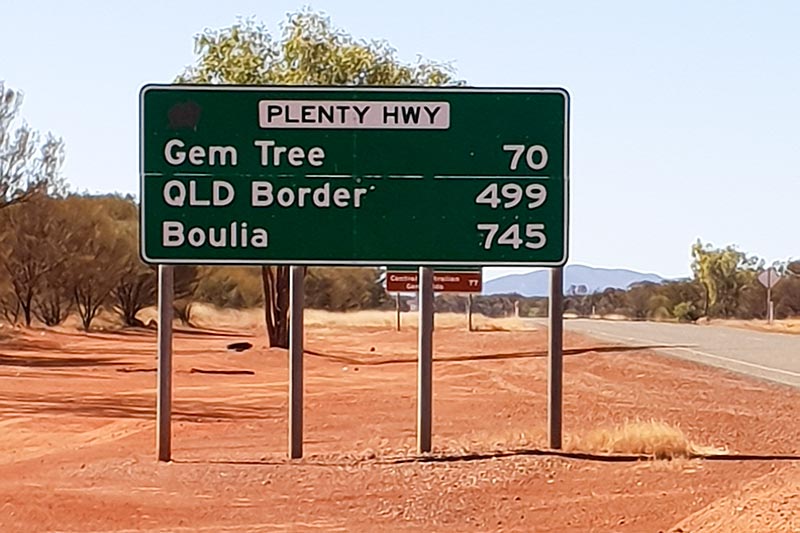
Also, have a look at the items you pack against other gear and imagine what might happen if they were to constantly rub against each other. Food items packed in cardboard or paper are prone to splitting open and spilling their contents. Imagine sugar, flour, rice, drinks or cooking oil spread throughout your cupboards.
Don’t just look inside the van. Think about items stored outside the van, including oil containers or jerry cans with spare fuel.
No matter how well you pack, always take extreme care when opening cupboards after travelling along a stretch of dirt road, as items can easily fall out and injure you.
SOME FINAL ADVICE
There are many other things I could add to this list, but these are some of the basics that will get you through most of the issues you’re likely to encounter. Most importantly, you need to keep in mind that travelling offroad in the outback usually means venturing into some harsh, extreme and sparsely populated remote areas.
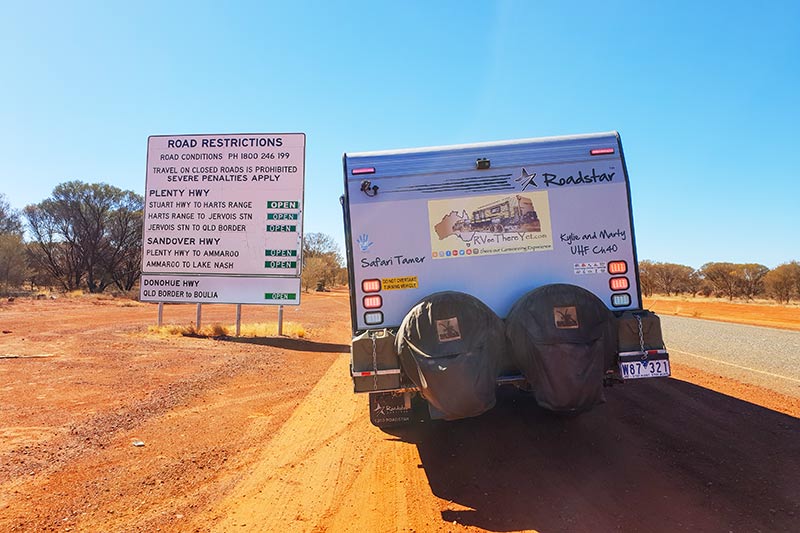
You need to assume that if anything happens to you and you need help, you are not likely to see another person or receive emergency services for hours or even days. If you do no other preparatory work, please ensure you heed the following guidance for remote-area travel:
- Have a well-prepared and maintained vehicle that has been modified or purpose-built for remote-area travel. 4WDs with high ground clearance are strongly recommended;
- Lower tyre pressures to at least 25psi on both your car and caravan when driving on dirt roads;
- Carry sufficient water and food with reserves in case of a breakdown;
- Drink water at regular intervals to maintain your hydration. Alcohol is not hydration;
- Carry sufficient fuel for the journey with reserves. Driving on dirt or sand will dramatically increase your vehicle’s fuel consumption;
- Carry sufficient spare parts for your vehicle, such as a tyre repair kit, filters, fan belts, fuses, radiator hoses, wire ties, duct tape, hose clamps, jumper leads, spare batteries, etc;
- Carry a comprehensive first aid kit suitable for remote-area travel. Snake bite kits are strongly recommended;
- Carry suitable vehicle recovery equipment at all times, such as a snatch strap, chains, shackles, shovel, two jacks and a comprehensive tool kit;
- Always ensure someone is aware of your travel intentions. Make them aware of your itinerary;
- Always carry some form of emergency communications. A satellite phone, Zoleo, Starlink access or an EPIRB are strongly recommended. UHF radios are not suitable for long-distance communications, although they may be useful to summon help from nearby;
- Travel at speeds appropriate to the conditions. Never exceed 80km/h on rough outback roads with deflated tyres;
- Avoid driving at night or in extremely wet weather;
- Do not camp near or in waterways, as flash flooding can occur without warning; and
- Do not rely on GPS mapping. Carry sufficient, up-to-date paper maps of the area you intend to travel.
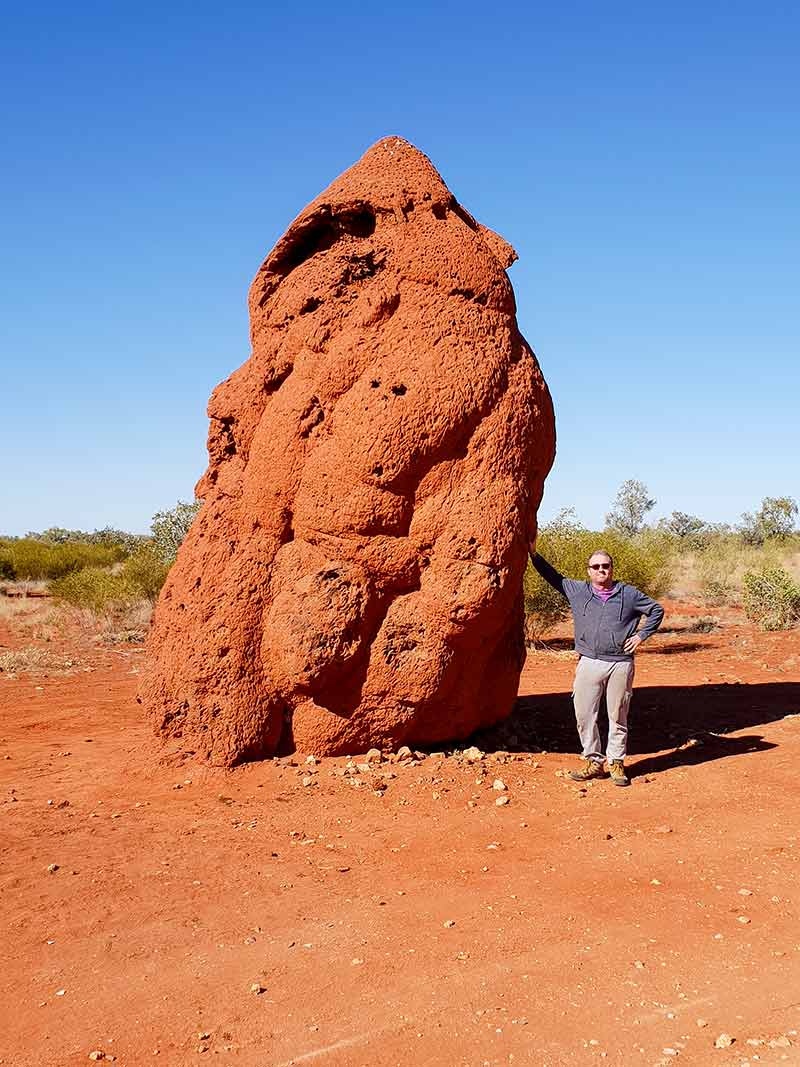
And please remember the golden rule of outback travel: in the event of a breakdown or other emergency event, never leave your vehicle. It is your only shelter from the elements, and it gives you the best chance of being spotted by search and rescue personnel. Even if you think that help is only a short walk down the road, I can almost guarantee you that it’s not, and that you’ve grossly underestimated the distance. I’ve been there, done that and got the tee-shirt to prove it!


